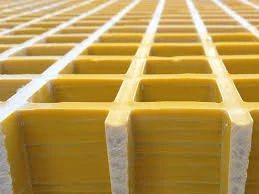loading...
- No. 9, Xingyuan South Street, Dongwaihuan Road, Zaoqiang County, Hengshui, Hebei, China
- admin@zjcomposites.com
- +86 15097380338
- Welcome to visit our website!
Guidelines for GRP Grating Specifications and Standards
Understanding GRP Grating Specifications
GRP (Glass Reinforced Plastic) grating has become an essential component in various industrial applications due to its unique properties and advantages. Often referred to as fiberglass grating, GRP grating is renowned for its strength, durability, and lightweight characteristics. This article delves into the specifications and key aspects of GRP grating, particularly focusing on its applications, benefits, and typical standards.
What is GRP Grating?
GRP grating is a composite material made from fiberglass strands that are combined with a resin matrix. The resulting product is a high-performance structure that boasts excellent chemical resistance, corrosion resistance, and anti-slip properties. These characteristics make GRP grating an ideal choice for environments where traditional materials like steel or aluminum might fail.
Key Specifications of GRP Grating
When selecting GRP grating for a project, several specifications must be considered
1. Load Bearing Capacity One of the primary specifications is the load-bearing capacity. GRP grating is available in various thicknesses and designs, allowing it to support different loads. Specifications typically denote the maximum load (measured in pounds per square foot) the grating can withstand while maintaining safety and structural integrity.
2. Span The distance between the supports is known as the span. The span length can affect the choice of grating thickness and type. It’s essential to follow guidelines provided by the manufacturer to determine the appropriate span to ensure safety and functionality.
3. Material Composition GRP grating is generally made from a combination of E-glass or S-glass fibers with unsaturated polyester or vinyl ester resins. The choice of fibers and resins affects the overall performance of the grating, including resistance to UV rays, chemicals, and moisture.
4. Bar Configuration GRP grating comes in various bar configurations, typically including a square mesh, rectangular mesh, or other custom designs. The configuration impacts the load distribution and anti-slip properties, making it crucial for specific applications.
5. Surface Treatment The surface of GRP grating can be treated to enhance its slip resistance. Textured surfaces are often incorporated into the design to provide better footing, especially in wet or slippery environments. This characteristic is particularly important for grating used in industrial settings or outdoor applications.
6. Color GRP grating can be manufactured in various colors based on the resin used, allowing for customization to fit aesthetic or regulatory requirements. Darker colors may provide better UV resistance, while lighter shades can help with visibility in safety applications.
Applications of GRP Grating
grp grating specification

GRP grating is versatile and finds applications across multiple industries
- Chemical Processing Due to its excellent chemical resistance, GRP grating is widely used in chemical plants for flooring and walkways, where exposure to aggressive substances is common.
- Water Treatment GRP grating can be found in wastewater treatment facilities because it withstands wet environments and is resistant to corrosion caused by sewage or chemical treatments
.- Oil and Gas Offshore platforms and onshore facilities benefit from GRP grating's strength and anti-slip properties. It provides safe walking surfaces where oil spills and chemical treatments are prevalent.
- Construction In the construction industry, GRP grating is used for stairways, platforms, and temporary works due to its lightweight nature, making it easier to transport and install compared to traditional materials.
Advantages of Using GRP Grating
1. Corrosion Resistance Unlike steel, GRP does not rust, making it a long-lasting solution in corrosive environments.
2. Lightweight GRP grating is significantly lighter than steel grating, reducing transportation and installation costs.
3. Low Maintenance Minimal upkeep is required due to the durability of GRP, making it a cost-effective choice over time.
4. Safety Features With its anti-slip surfaces, GRP grating enhances worker safety, reducing the risk of slips and falls.
5. Eco-Friendly Many GRP products are manufactured with eco-friendly processes, and the materials can often be recycled.
Conclusion
In summary, GRP grating is a robust and versatile solution for a wide range of applications across various industries. Understanding the specifications, benefits, and applications is crucial for selecting the right type of grating for your needs. As industries continue to prioritize safety and efficiency, GRP grating will undoubtedly play a critical role in future developments.
-
The Rise of FRP Profiles: Strong, Lightweight, and Built to LastNewsJul.14,2025
-
SMC Panel Tanks: A Modern Water Storage Solution for All EnvironmentsNewsJul.14,2025
-
GRP Grating: A Modern Solution for Safe and Durable Access SystemsNewsJul.14,2025
-
Galvanized Steel Water Tanks: Durable, Reliable, and Ready for UseNewsJul.14,2025
-
FRP Mini Mesh Grating: The Safer, Smarter Flooring SolutionNewsJul.14,2025
-
Exploring FRP Vessels: Durable Solutions for Modern Fluid HandlingNewsJul.14,2025
-
GRP Structures: The Future of Lightweight, High-Performance EngineeringNewsJun.20,2025
